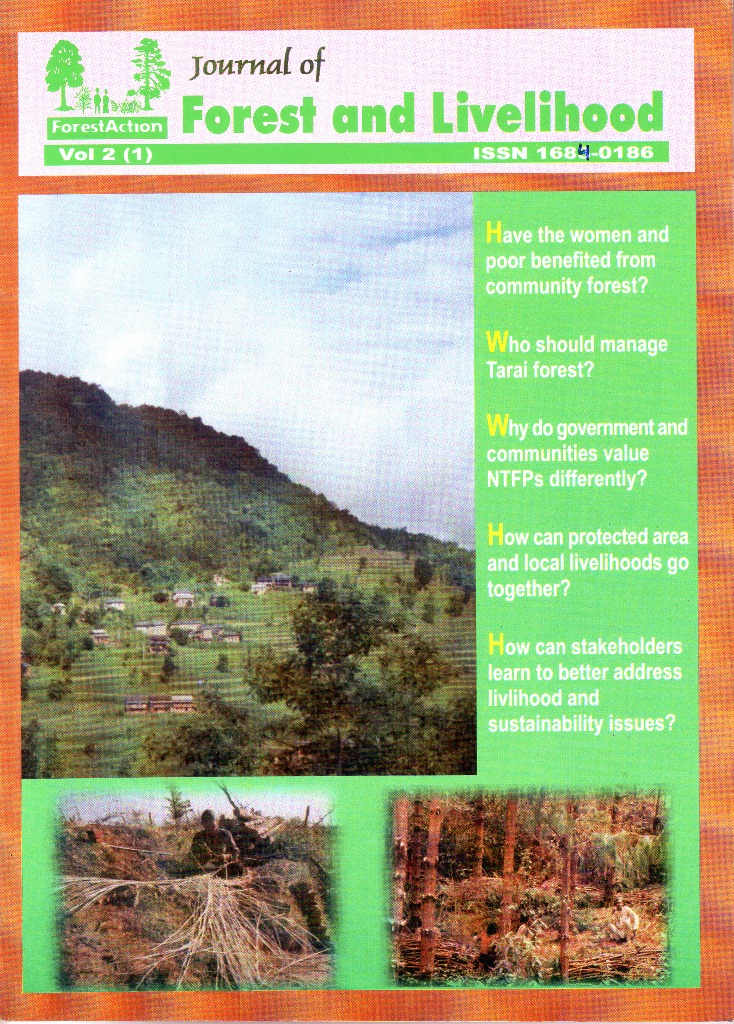Issues and options of sustainable management of Himalayan medicinal herbs
DOI:
https://doi.org/10.3126/jfl.v2i1.59678Keywords:
sustainable management of Himalayan medicinal herbs, issue of sustainable management of Himalayan medicinal herbs, medicinal herbs, problem in management of Himalayan medicina herbsAbstract
Nepal hosts a wide range of NTFPs and bio-diversity including over 700 species of medicinal herbs. NTFPs are an important part of the Nepalese economy, both locally as well as nationally. Recent studies indicate that several commercially valuable species are being over used and degraded (Edward 1996; Malla et al. 1995; Hertog 1995; Karki 1996; Sharma, 1996) due to higher demand as raw materials for herbal industries in India and other countries. As a result of pre-mature harvesting, over-exploitation and haphazard collection of NTFPs, the productive potential of the whole forest ecosystem is undermined. The damage is particularly serious in terms
of pressure on the few species identified for trade, as well as pre-mature harvesting, physical damage, and haphazard collection.
This indicates a need to assess the reasons behind unsustainable practices, and identify options for sustainable management. Based on the recently collected field data from the western Himalayan region (Humla and Dolpa districts), the paper analyzes dynamics of unsustainable harvesting and management practices of NTFPs, with particular reference to Jatamansi (Nardostachysgrandiflora), Kutki (Picmrhiza scrophulariiflora) and Sugandhawal (Valeriana jatainansi). Key variables within institutional, economic, natural/physical, and policy aspects are considered for analysis. Finally, potential actions that can be taken to improve harvesting practices are also suggested.
Downloads
Downloads
Published
How to Cite
Issue
Section
License

This work is licensed under a Creative Commons Attribution-NonCommercial 4.0 International License.
CC-BY-NC: This license allows reusers to distribute, remix, adapt, and build upon the material in any medium or format for noncommercial purposes only, and only so long as attribution is given to the creator.





